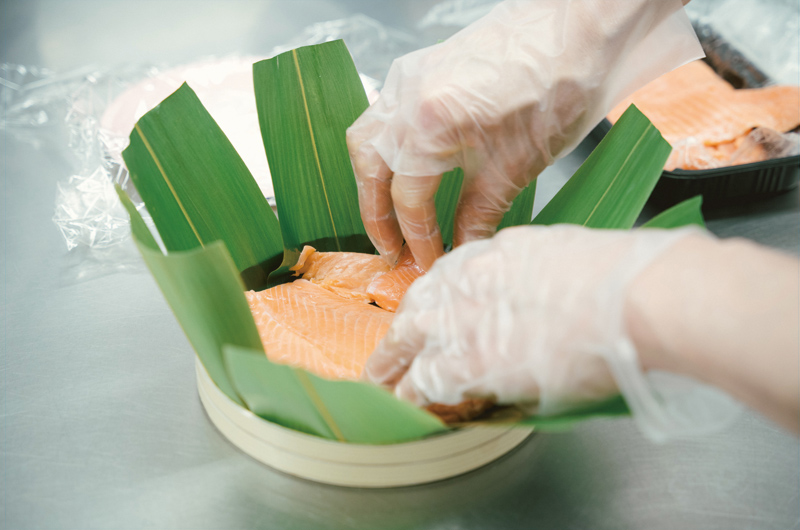MASUZUSHI Pressed Trout Sushi
What is Masuzushi?
Masuzushi is a distinct type of sushi, unlike the more common nigiri. It’s a signature local Toyama dish—a form of oshizushi (pressed sushi). Typically, trout (salmon family) cured with salt and vinegar is placed atop vinegared rice, then wrapped in bamboo leaves and pressed firmly under a heavy weight.
Opening the traditional, round magewappa wooden package, known for its tight seal, reveals the vibrant, light-pink trout, framed by green bamboo leaves that fan out like petals. It’s a truly charming sight, and reminds one of a large flower. The enticing aroma of the sushi mingling with the clean, distinctively Japanese scent of the bamboo leaves (which actually have antibacterial properties that keep it fresh) makes eating Masuzushi a truly memorable experience. Once you’ve tried it, you'll understand why it is so deeply-cherished by the people of Toyama.
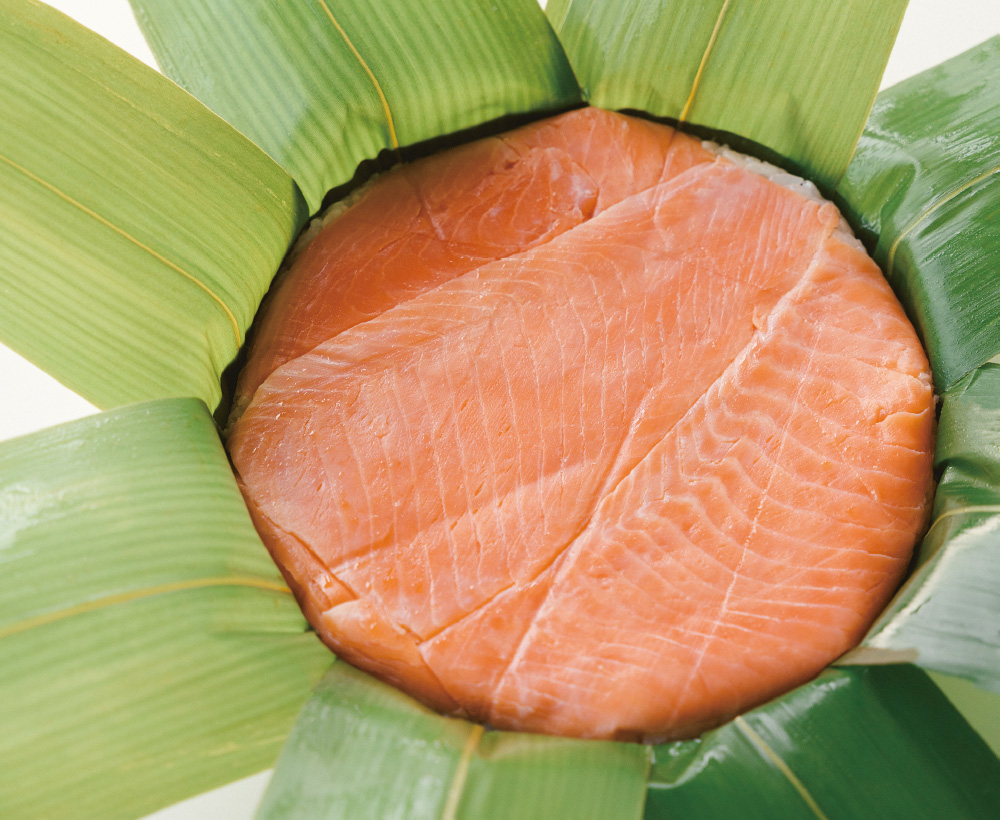
Masuzushi Diagram
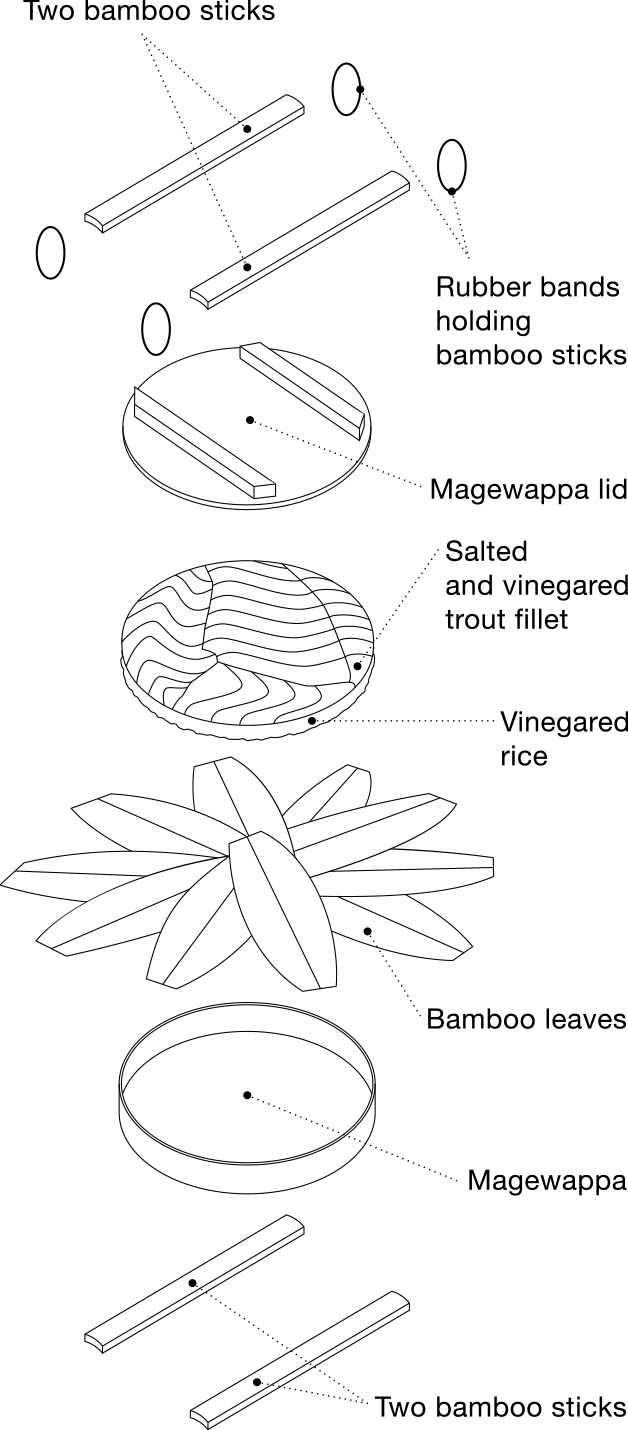
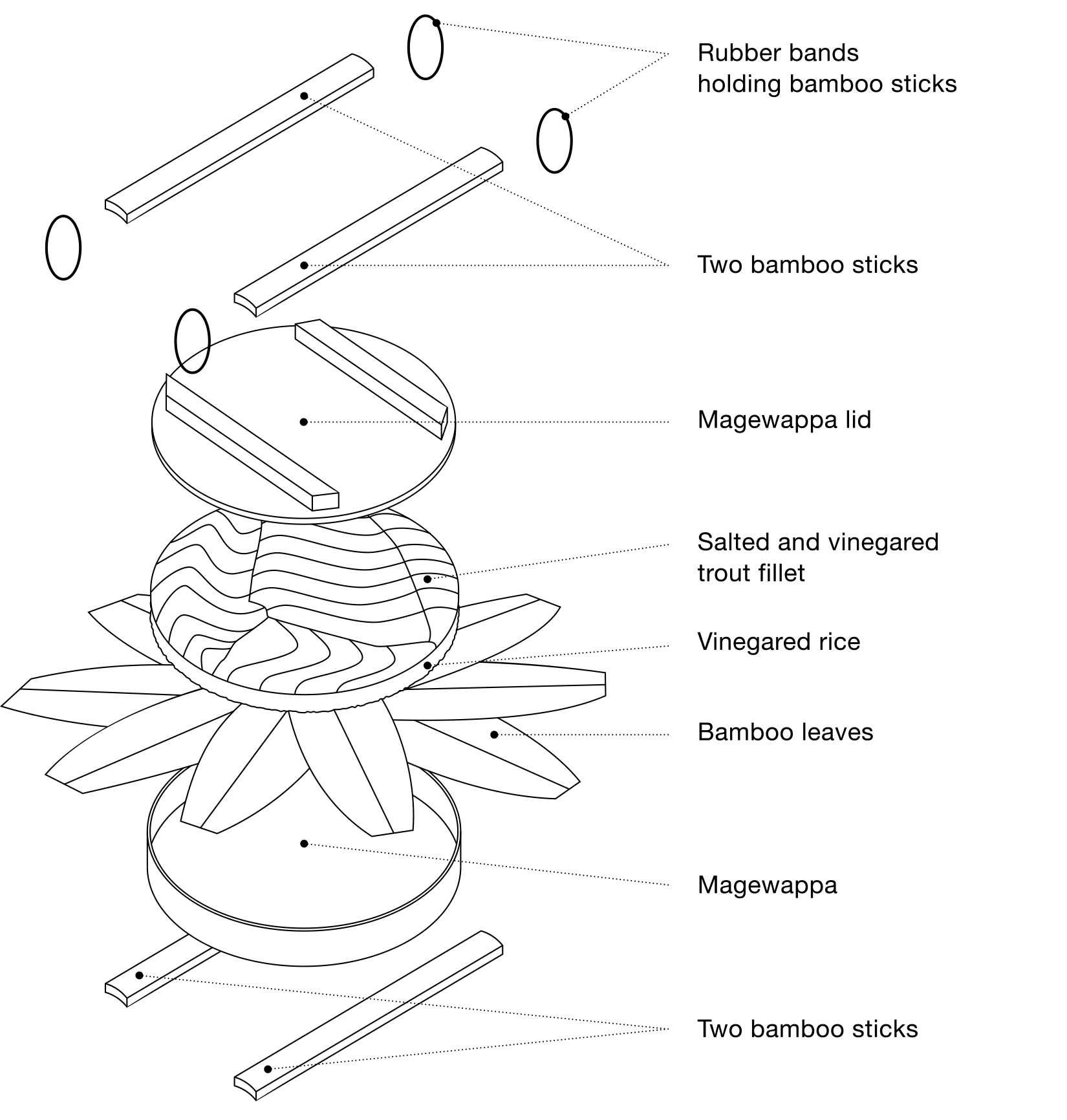
Where to Buy Masuzushi
Masuzushi is typically sold as takeout rather than served in restaurants. You can find it at souvenir shops in Toyama Station and Toyama KitoKito Airport, as well as in department stores and supermarkets within Toyama City, or direct from various specialty shops. It’s perfect to enjoy back at your hotel or as a lunchbox for a day trip from Toyama—just be mindful of the best-by date, usually within 2-3 days of production. Its easy portability is one of its great advantages!
A Diverse World of Flavors
Toyama City boasts over 20 Masuzushi specialty shops, each with its own unique methods of preparation and flavors. The taste varies depending on the type of trout used, the thickness of the fillet, the seasoning of the vinegared rice, and even the quality of the bamboo leaf wrapping. You’ll notice distinctions in acidity, sweetness, saltiness, freshness, and maturity, so much so that locals often have their own favorite brand!
How to Eat Masuzushi
While opening up the bamboo leaves on top (click here for details) makes for a beautiful presentation, you can also cut the Masuzushi while still wrapped, perhaps making it easier to hold and eat by hand. Of course, it’s perfectly acceptable to unwrap the leaves, slice it and enjoy using chopsticks if you prefer.
-
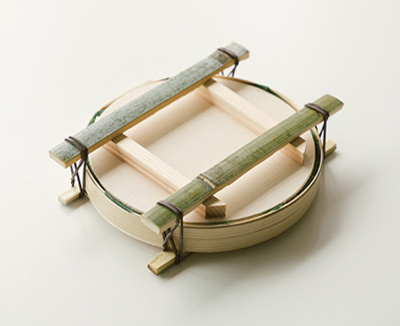
1 Remove the outer paper wrapping.
-
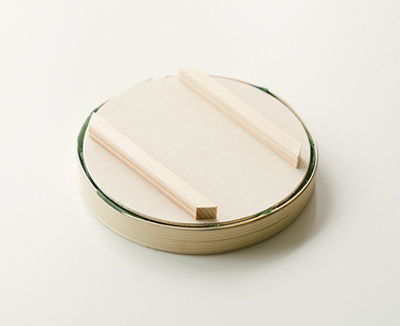
2 Take off the bamboo sticks.
-
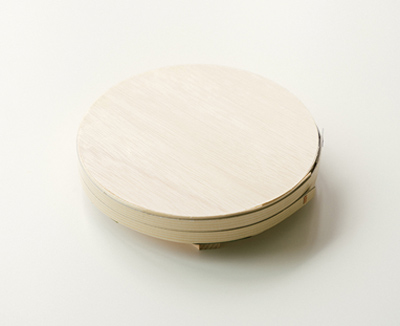
3 Flip the container so the lid is on the bottom.
-
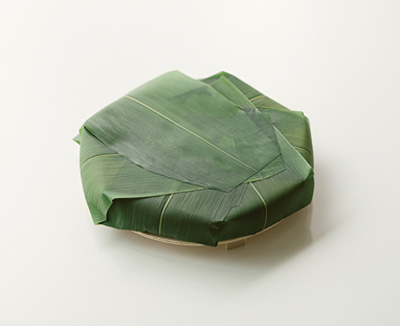
4 Then remove the magewappa (wooden ring) — the bamboo-wrapped Masuzushi will be resting on the lid.
-
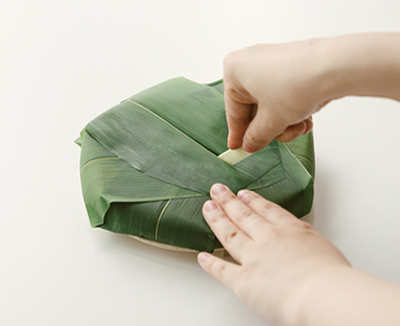
5 Using the lid as a cutting board, slice directly through the bamboo leaves to cut the Masuzushi into 8 equal portions (or desired size) with the provided knife.
-
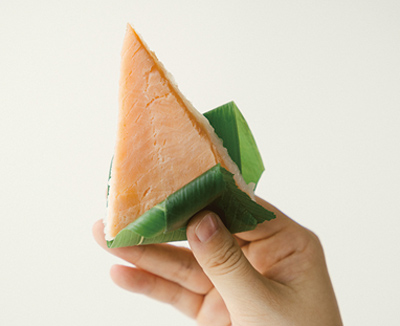
6 Hold a piece by hand, peeling back the bamboo leaf as you enjoy it.
The History of Masuzushi
The roots of Masuzushi trace back to nare-zushi, an ancient method for preserving fermented fish and rice. By the 18th century Edo period, Toyama became known for its nare-zushi made from fish caught in the local Jinzu River. The feudal lord of Toyama, Maeda Toshioki, particularly favored nare-zushi made with sweetfish (ayu) and even sent it as a gift to the Edo Shogunate, with Shogun Tokugawa Yoshimune reportedly praising it. Nare-zushi later evolved into what is now known as oshizushi (pressed sushi). In Toyama, trout became the most commonly used fish for oshizushi. In modern times, with the development of railways, Masuzushi also gained popularity as a beloved ekiben (train station bento).
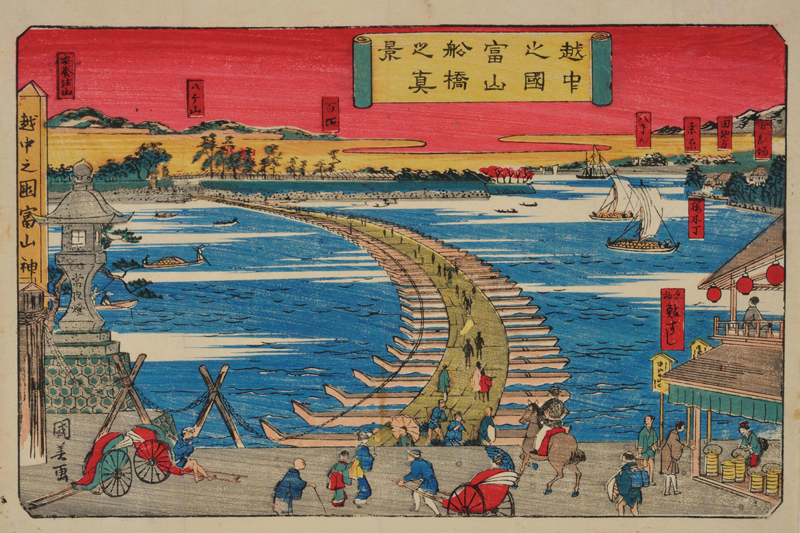 “A True Scenery of the Pontoon Bridge in Toyama, Etchu Province”
“A True Scenery of the Pontoon Bridge in Toyama, Etchu Province” by Matsuura Moriyoshi (or Kuniyoshi) Courtesy of Toyama Medicine Merchants Museum
Tips for enjoying Masuzushi
Masuzushi is best stored at room temperature, as refrigeration tends to harden the rice. As both fish and rice are seasoned with vinegar and the package is securely sealed, it stays fresh for several days. Although already flavorful and delicious as is, a dash of soy sauce can be added according to preference. In Toyama City, shops can be found where you can observe the Masuzushi being made or even try a hand at making your own. Keep an eye out for related products, such as Burizushi, (pressed sushi made with yellowtail, a winter delicacy in Toyama), or smaller versions of Masuzushi. We highly recommend exploring the deep and fascinating world of Masuzushi!
